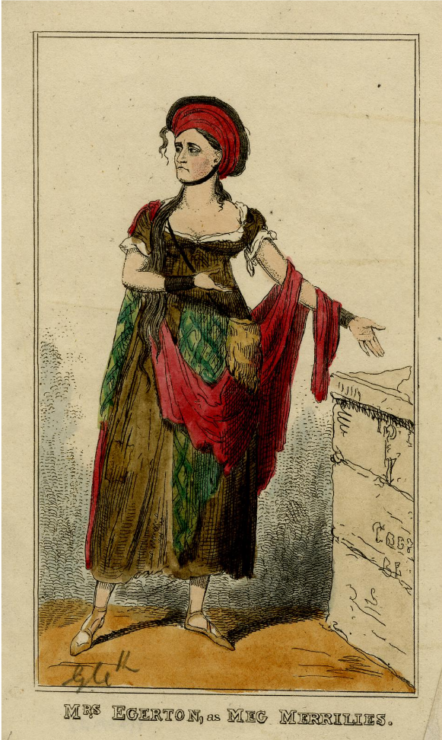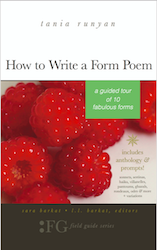Meg Merrilies
Old Meg she was a Gipsy,
And liv’d upon the Moors:
Her bed it was the brown heath turf,
And her house was out of doors.
Her apples were swart blackberries,
Her currants pods o’ broom;
Her wine was dew of the wild white rose,
Her book a churchyard tomb.
Her Brothers were the craggy hills,
Her Sisters larchen trees—
Alone with her great family
She liv’d as she did please.
No breakfast had she many a morn,
No dinner many a noon,
And ‘stead of supper she would stare
Full hard against the Moon.
But every morn of woodbine fresh
She made her garlanding,
And every night the dark glen Yew
She wove, and she would sing.
And with her fingers old and brown
She plaited Mats o’ Rushes,
And gave them to the Cottagers
She met among the Bushes.
Old Meg was brave as Margaret Queen
And tall as Amazon:
An old red blanket cloak she wore;
A chip hat had she on.
God rest her aged bones somewhere—
She died full long agone!
-John Keats
Enjoy Artistic Representations of “Meg Merrilies” by John Keats

Janauschek as “Meg Merrilies” Abstract/medium: 1 print: .black and white lithograph

Etching of actress Sarah Egerton in the role of the Meg Merrilies, from Daniel Terry’s musical stage adaptation of Walter Scott’s novel Guy Mannering, 1821.
Listen to this Reading of “Meg Merrilies”
Listen to Musical Interpretations of “Meg Merrilies” by John Keats
John Keats Biography
Keats was born in London on Oct. 31, 1795; a few weeks later he was baptized at St. Botolph Without Bishopsgate Church, near where his parents lived and father worked as the manager of a stable owned by his father-in-law. Keats was the eldest of four children, with George, Tom, and Fanny following him. The family was well off enough that the boys were sent to Clark’s Academy in Edmonton at what is now the north London borough of Enfield for their education; it was riding his horse home from a visit to the school that Keats’ father fell and died the next day. His mother remarried (rather quickly, in fact), fought with the rest of the family, and died fairly young from consumption or tuberculosis, which was all too common at the time and would eventually claim the life of Keats’ youngest brother, Tom, as well as Keats himself.
He was apprenticed to a local doctor, but the relationship didn’t seem to work too well. He ended up working at St. Guy’s Hospital in the Southwark district of London, continuing his medical training and writing poetry (the site of the original St. Guy’s in now occupied by London’s tallest office building, known locally as “The Shard”).
While Keats had numerous city connections (Anita Miller also has a “Keats in the City” walk), it is with Hampstead that he is most closely associated. Fellow poets lived there, as did the editor who first published his poetry. Artists whom Keats associated with lived there. Keats himself would move there with his brothers. Keats and his friends would wander Hampstead Heath, talking and arguing poetry and the issues of the day. After moving into Wentworth House in Hampstead, Keats wrote five of six famous odes, including “Ode to a Nightingale.” And it would be at Wentworth House in Hampstead that Keats would realize that he was dying from the same disease that took his mother and younger brother.
Enjoyed Meg Merrilies by John Keats and want to know more about Keats’ life? Try A Month With Keats: A Walk Into His Life
That’s it for Meg Merrilies!
BUY ‘HOW TO WRITE A FORM POEM’ NOW!
